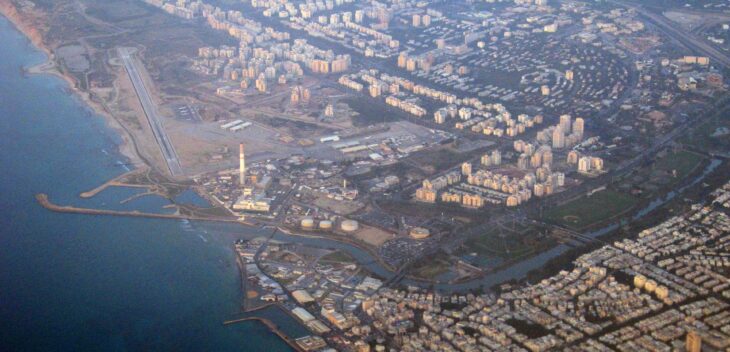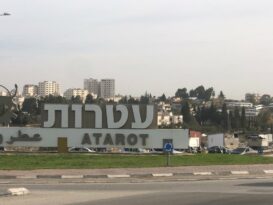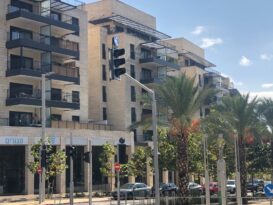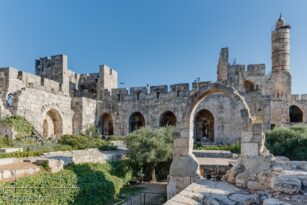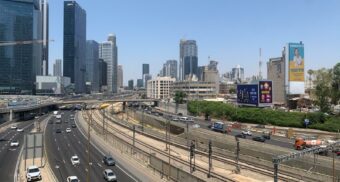In the most expensive region of the country, along several kilometers of coastline between Tel Aviv and Herzliya, there are major plans underway for the construction of three new neighborhoods in Israel. The plans for the first 5,000 apartments – to be built on the former site of the Sde Dov Airport – were recently approved. The starting price for a 4-room apartment is expected to be around NIS 5 million, and that number may triple depending on proximity to the beachfront.
When discussing Israel real estate, people often claim that there is no land left in the center of the country earmarked for residential construction. They conclude that the state must focus on the development of new neighborhoods in Israel in the northern metropolis of Haifa and the southern city of Beersheba, located in the sparsely populated Negev Desert.
But here’s a surprising fact: in the most expensive area in the country, along several kilometers of coast leading from the bustling commercial complex of the Tel Aviv Port northward to the prestigious villa neighborhood of Herzliya Pituach, there are actually hundreds of acres of land approved for construction. These plans will ultimately create a stretch of commercial buildings, hotels, and at least 40,000 residential units along the coast between Tel Aviv and Herzliya – two of the most expensive cities in Israel.
Details of the plans for the new neighborhoods in Israel
The plans include three new neighborhoods in Israel, adjacent to one another. The northernmost project, located right by Herzliya, is called “Azure Beach.” According to the plan, which was submitted for objections last August, 12,500 housing units and hundreds of thousands of square meters of office space will be built on approximately 500 acres between the Herzliya Marina and the border of Tel Aviv.
Just south of Azure Beach is “TA/3700,” a plan which includes 12,000 apartments spread over 470 acres. The southernmost project, known as the “Sde Dov District”, was named after the Sde Dov Airport, which mainly operated domestic flights between Tel Aviv and Eilat until it was shut down last summer. This plan includes 16,000 apartments, thousands of hotel rooms, and hundreds of thousands of square meters of office space built on an area of approximately 370 acres.
New areas expected to impact housing prices in central Israel
In terms of real estate, these three construction projects are located in the most expensive area in Israel. Several weeks ago, American businessman and investor, Sheldon Adelson, signed a record-breaking NIS 300 million deal on a house for the American ambassador in Herzliya Pituach, the most expensive neighborhood in the country.
The new plans propose multi-storey apartment buildings, as opposed to ground-level construction and villas. Judging by nearby neighborhoods, the price of a new 4-room apartment of about 100 square meters is expected to start from around NIS 5 million, and an apartment located closer to the beach could easily reach double or triple that amount.
The new supply of residential units may provide a solution to one of the most pressing economic problems in Israel – high apartment prices. Although these luxury apartments on the coast will undoubtedly be exorbitantly expensive, the addition of 40,000 new apartments in the heart of the most sought-after area in Israel could have a dramatic effect on the market, leading to a drop in prices in surrounding areas. However, the progress of all three new neighborhoods in Israel has been very slow, each for its own reasons.
Northern projects have encountered problems along the way
Both Azure Beach and TA /3700 are located completely on privately owned land. Over the past few decades, the land in question was divided between thousands of different owners, mainly investors and/or inheritors. Today, a piece of land of just 100-150 square meters in this area costs more than NIS 1 million, with buyers purchasing only “the right to an apartment,” – that is, the assumption that they will one day be able to build an apartment or office space on the land. Naturally, a large number of owners makes it difficult to coordinate, organize, and advance the plans.
Additionally, the two local authorities – Herzliya and Tel Aviv – both have a reputation for holding up residential construction plans, which are not considered financially viable from the municipalities’ standpoint. In both neighborhoods, planning began more than a decade ago, but they are still awaiting the final stamp of approval. Two weeks ago, landowners from the TA /3700 project filed a petition against the municipality over this issue:
“Almost three years have passed since the detailed plans were submitted for approval, about two and a half years since the date of deposit, and more than a year since receiving all of the objections to the plans. The local committee has still not issued any decisions, or even published the researchers’ recommendations,” they claim.
All in all, at this rate it seems that it will still take several more years until construction on the new neighborhoods begins under the two northern projects in Israel.
Southern plan moving ahead rapidly
The situation in the Sde Dov District, however, is very different. There, the main obstacle has already been resolved: the demolition of the airport. Despite the fact that the initial agreement to clear away the airport was signed in 2007, the state only managed to carry this out in 2019, following battles between the Eilat municipality, the Arkia airline, and the Mayor of Tel Aviv, Ron Huldai, who opposed the closure of the airport.
Since this major hurdle was cleared in 2019, construction plans have progressed relatively quickly. In July, the district planning committee approved the master plan for the area, and by August a detailed plan for the construction of the first 5,000 apartments had already been submitted for objections. The next step will be to issue building permits.
Money as the motivating factor
Many claim that the Sde Dov District plan has moved ahead more smoothly than the plans for the other two new areas in Israel because it will be built on state land. The government has a direct interest in advancing the plans as quickly as possible so that they can sell the land to contractors for huge sums of money. There is probably a measure of truth to this theory, as the state is expected to pocket about NIS 10 billion from this project. Now more than ever, the government needs every shekel it can get to cope with the severe economic crisis caused by the Covid-19 pandemic.
